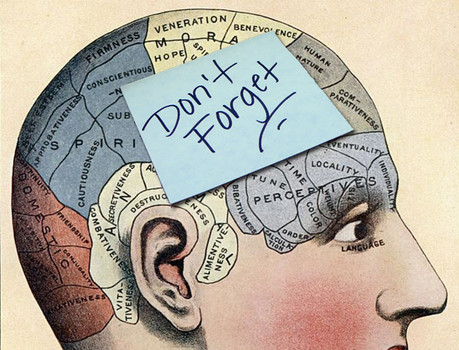Memory is a precious commodity that we all hold dear to our hearts. Memories help us relive moments of joy, sorrow, and everything in between. However, memories tend to fade over time, making it difficult to remember the details of a particular moment or experience. This is where Memory Map comes in handy as a unique way to preserve and share memories.
Memory Map is an innovative platform that allows individuals to create a virtual map of their memories. It combines technology with storytelling by providing users with an interactive map that they can use to record their experiences and share them with loved ones.
With Memory Map, users can preserve their memories for posterity while creating a space for sharing stories that may have otherwise been forgotten. In this article, we will explore how Memory Map works, how you can create your own Memory Map, how you can share your memories with loved ones, and the benefits of using this platform.
How Memory Map Works
Table of Contents
- How Memory Map Works
- Creating Your Own Memory Map
- Sharing Memories with Loved Ones
- Benefits of Using Memory Map
- Frequently Asked Questions
- Is Memory Map available in languages other than English?
- Can I add videos to my Memory Map?
- What is the maximum number of memories that can be added to a Memory Map?
- Is there a limit to the number of people I can share my Memory Map with?
- Can I edit or delete memories once they have been added to my Memory Map?
- Conclusion
The functionality of Memory Map is facilitated through an interactive interface that allows individuals to create a visual representation of their personal experiences. Users can pinpoint specific locations on a map and attach memories, photos, videos, or audio recordings to those locations. This creates an immersive experience for viewers who can explore and interact with the memories in a meaningful way.
These location-based memories offer a unique way to preserve and share personal history while also contributing to larger cultural and educational narratives. Memory Map has been used by museums, city planners, educators, and historians as a tool for documenting local histories and sharing them with wider audiences. By combining technology with storytelling, Memory Map provides an engaging platform for people to connect with their past while also building bridges between communities across time and space.
Creating Your Own Memory Map
Crafting a personalized roadmap of significant events and experiences in one’s life can be likened to creating a vivid tapestry of their past. Creating your own memory map can be an exciting and rewarding experience, allowing you to reflect on cherished memories while also customizing the experience to suit your preferences. Memory maps are not just about listing important events but also about capturing how they shaped our lives, relationships, and perspectives.
The process of creating a memory map begins with selecting the most significant moments or themes that define one’s life. It could be anything from family vacations to personal achievements or even struggles that inspired growth and transformation. Once these moments have been identified, interactive features such as photos, videos, audio recordings, or journal entries can be added to create a more immersive experience.
Customizing the design elements like colors, fonts, and icons will make it unique and personalized. The end result is not only an engaging record of one’s life journey but also a testament to the power of storytelling in preserving memories for generations to come.
Sharing Memories with Loved Ones
Documenting life experiences can be a profound way to connect with others, allowing for the sharing of meaningful moments and fostering an understanding and appreciation for each other’s individual journeys. Sharing memories with loved ones can take many creative forms, including creating memory books or albums, scrapbooking, or even creating personalized videos or slideshows. These tangible representations of memories allow loved ones to revisit important moments in their lives together, strengthening bonds and creating new connections.
Long-distance memory sharing is also possible through technology. Video calls can be a great way to share stories and reminisce about past experiences with family and friends who live far away. Social media platforms offer opportunities to post old photos or share written memories in online groups dedicated specifically to preserving and sharing memories.
With these tools at our disposal, it has become easier than ever before to keep those we love close by even when we are physically apart.
Benefits of Using Memory Map

Utilizing a tool such as Memory Map can provide individuals with an organized and visually stimulating method to reflect on their personal experiences and connect with others through shared insights. One of the key advantages of using Memory Map is that it allows users to create a digital archive of their memories, which can be accessed at any time from anywhere. This feature makes it easy for individuals to revisit their past experiences and relive moments that are special to them.
Another important benefit of using Memory Map is that it enables users to capture and document important details about their memories, including people, places, and emotions associated with each experience. By doing so, individuals can gain a deeper understanding of themselves and their relationships with others.
Moreover, this tool also helps in preserving cultural heritage by enabling communities to document historical events or traditions through collective memory mapping projects. Overall, Memory Map provides a unique way for individuals to preserve and share their cherished memories while also fostering connections and understanding among people across different cultures.
Frequently Asked Questions
Is Memory Map available in languages other than English?
Translation support and cultural relevance are crucial factors in the global adoption of any technology. Memory Map, a unique way to preserve and share memories, recognizes this need and offers translation support for various languages, including Spanish, French, German, Italian, Chinese, and many others. This feature allows people from different linguistic backgrounds to use the platform effortlessly.
Additionally, Memory Map promotes cultural relevance by allowing users to attach cultural significance to their memories by tagging them with significant locations or landmarks. This not only preserves personal memories but also contributes to local heritage preservation efforts. Overall, Memory Map’s commitment to translation support and cultural relevance makes it an inclusive platform that celebrates diversity while preserving cherished memories.
Can I add videos to my Memory Map?
In the digital age, it seems that editing memories has become a common practice. With the advent of technology, people can manipulate and modify their memories to suit their desired narrative. However, Memory Map Collaboration offers a unique approach to preserving and sharing memories without compromising their authenticity.
One may wonder if videos can be added to this process. The answer is yes! Videos add another layer of depth and dimensionality to one’s memory map. Not only can they showcase a moment in time, but they also capture emotions, movements, and sounds that are not present in photographs alone. By incorporating videos into one’s memory map, individuals can relive those moments as if they were happening all over again.
What is the maximum number of memories that can be added to a Memory Map?
The benefits of memory mapping as a tool for preserving and sharing memories are numerous. Memory mapping allows individuals to create a visual representation of their memories, which can be an effective means of organizing and recalling past experiences. Additionally, the process of creating a memory map can have positive effects on mental health by promoting reflection, mindfulness, and self-awareness.
By engaging in this creative process, individuals may also gain insight into patterns or themes in their lives that they may not have previously recognized. While there is no maximum number of memories that can be added to a memory map, it is important to approach the practice mindfully and intentionally in order to reap its full potential benefits.
/cdn.vox-cdn.com/uploads/chorus_asset/file/23165626/memory2final.jpg)
Image source: vox.com
Imagine a vast library with countless books, each representing a memory map. The books contain valuable information and personal experiences that are meant to be shared with others. However, like any library, there are sharing restrictions and privacy settings that must be considered when sharing the content within the books. Similarly, when it comes to sharing one’s memory map, there may be limitations on how many people can access it due to privacy concerns or personal preferences.
Depending on the platform used for creating the memory map, there may also be options to set specific sharing restrictions and privacy settings to ensure that only certain individuals can view the content. Ultimately, while there may be some limitations on who can access a memory map, these measures exist to protect one’s personal memories and ensure they are shared in a safe and secure manner.
Can I edit or delete memories once they have been added to my Memory Map?
When it comes to memory mapping, revision options, and data privacy are important considerations for individuals who wish to edit or delete their memories. Memory mapping tools such as MindMeister and XMind offer users the ability to revise their maps as they see fit, allowing them to add or remove memories, images, and notes.
However, it is crucial that users take into account the potential risks of sharing sensitive information on a public platform. Therefore, it is recommended that users keep their memory maps private or only share them with trusted individuals to ensure data privacy. Overall, the ability to revise and manage one’s memories through memory mapping provides a unique way of preserving personal experiences while also promoting self-reflection and growth.
Conclusion
In conclusion, Memory Map offers a unique and innovative way to preserve and share memories. By creating a visual representation of significant events, places, and people in our lives, we can capture the essence of those moments in a tangible form that can be revisited time and again. This tool is not only useful for personal memory keeping but also for sharing stories with loved ones.
Moreover, Memory Map allows us to connect emotionally with our experiences by providing a platform to explore details that may have been forgotten over time. The use of figurative language in this article aims to evoke an emotional response from readers and highlight the significance of preserving memories.
Just as memories are like seeds planted within our minds, Memory Map serves as a fertile ground where they can bloom into something beautiful that we can cherish forever. In essence, Memory Map is more than just an app; it’s a treasure chest full of precious moments waiting to be unlocked and shared with others.
- 10 Trendy Black Nail Ideas To Elevate Your Nail Game - May 6, 2024
- Getting A Free Divorce In Virginia? Here’s What To Expect - April 24, 2024
- Safeguard Your Home With Exceptional Residential Roofing Services In Canton - April 10, 2024





No Comments